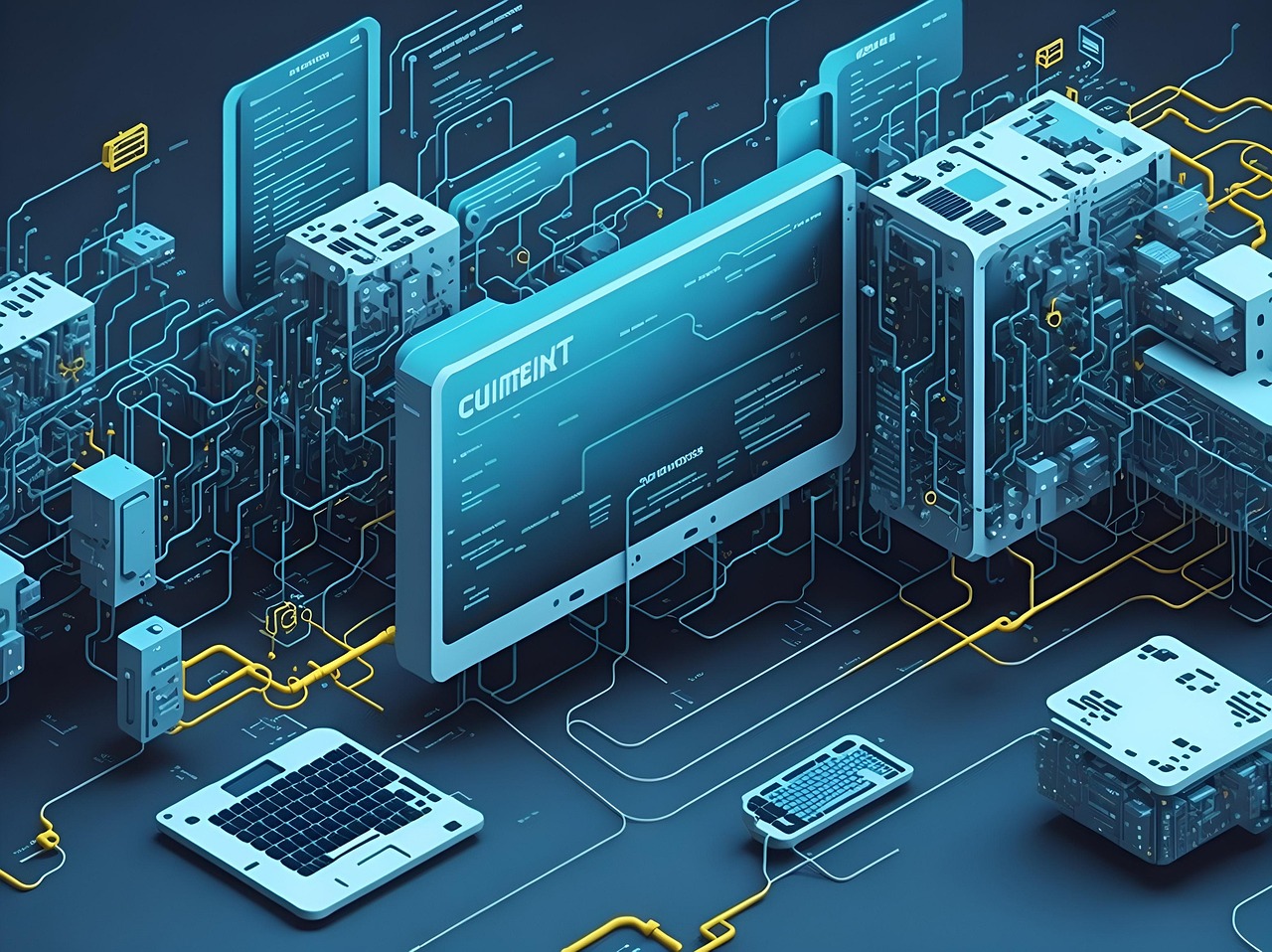
IoT continues to rapidly transform schools and universities, making learning more interactive and efficient. Recent studies show a steady rise in research on AI and immersive technologies in education, with machine learning tools helping students make better decisions about their academic paths. Experts expect 5G networks to enable real-time, immersive experiences, further shaping the future of iot in education by supporting advanced applications and seamless connectivity.
IoT devices create smart classrooms that boost student engagement and help teachers spot learning challenges early, improving success rates.
Personalized learning tools powered by AI and IoT adapt lessons in real time, making education more effective and motivating for students.
Immersive technologies like AR and VR make lessons interactive and fun, helping students understand complex topics and work better in teams.
Real-time data and predictive analytics give instant feedback and early warnings, allowing teachers to support students before problems grow.
Strong security and privacy measures are essential to protect student data as schools adopt more connected devices and digital credentials.
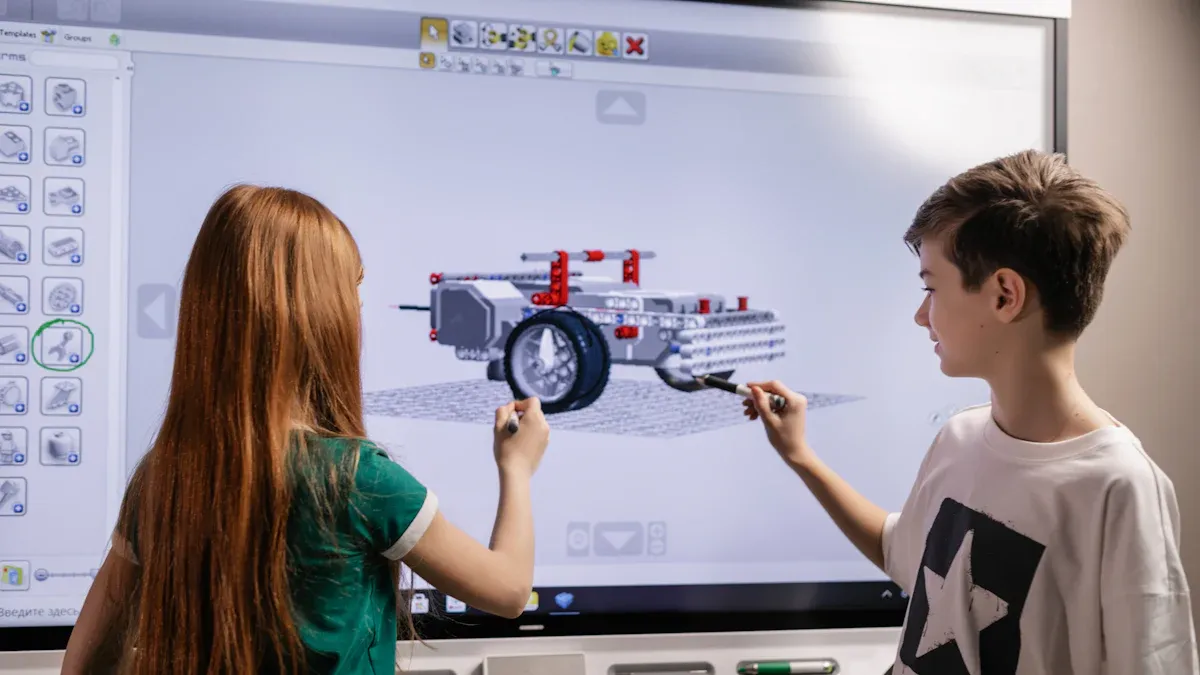
IoT devices help create connected classrooms that support interactive learning. Smart whiteboards, voice-assisted tools, and sensors track student participation and adjust lessons in real time. Schools see a 25% increase in student engagement when using these technologies. AI systems predict which students may fall behind, allowing teachers to help early and reduce dropout rates. Real-time learning analytics identify struggling students within hours, not weeks. At Georgia State University, an early-alert system scans hundreds of risk indicators each night, leading to higher graduation rates and smaller achievement gaps. Adaptive learning platforms help students move ahead faster than with traditional methods. Faculty use live engagement data to improve teaching and make quick changes. Administrators use data to update programs and manage resources more efficiently.
Libraries on smart campuses use RFID tags and automated systems to manage books and resources. These tools make it easy to track items and reduce the time spent on manual tasks. For example, the National University of Misiones in Argentina uses a LoRaWAN network to monitor campus infrastructure, including library resources, without major rewiring. Smart energy systems in libraries can cut electricity costs by up to 30%. Automated checkouts and returns save time for both students and staff. These changes help libraries serve more students and keep resources available when needed.
IoT technology improves campus safety in many ways. Real-time location tracking with smart ID badges and AI-powered surveillance systems help prevent unauthorized access. Emergency alerts can lock down buildings and guide students to safe areas within seconds. Studies show that AI security systems can reduce crime rates by up to 40%. Many schools use emergency notification apps to send rapid alerts during crises. Automated reporting and patrol tracking ensure that security teams cover all areas and respond quickly to incidents. These systems also help schools meet safety rules and keep accurate records for audits.
AI and IoT work together to create learning experiences that fit each student’s needs. Schools use smart sensors and AI models to track attendance and academic performance. These systems analyze data from thousands of students and recommend learning paths based on strengths and weaknesses. In a 2025 study, researchers used AI models like Gradient Boosting to give personalized advice to over 22,000 students. The models reached high accuracy, with results showing a Mean Squared Error as low as 0.0221 and an R2 value of 0.9997. These numbers show that AI can help teachers and students make better decisions about learning. Schools can now build flexible, competency-based programs that adjust as students grow.
Adaptive learning tools change lessons in real time to match how students learn best. These tools help teachers spot students who need extra help and give them support right away. In Haryana schools, the iPrep PAL platform improved learning outcomes across many subjects. The table below shows how much students improved:
Subject | Number of Students Assessed | Percentage Improvement in Learning Outcomes |
|---|---|---|
Business Studies | 6,807 | 38% |
Economics | 3,926 | 47% |
Geography | 9,214 | 47% |
Overall Average | 19,950 | 44% |
Teachers use these tools to track progress and give feedback quickly. Machine learning systems can predict which students might struggle, so teachers can help before problems grow. Adaptive feedback also keeps students motivated and helps them finish their courses.
IoT-enabled personalized learning boosts student engagement and satisfaction. Teachers report that 65% see a positive impact from using smart tools like interactive whiteboards and smart desks. Nearly half of schools use IoT data to improve their lessons, making learning more effective. Smart schools report higher student satisfaction, with 69% of students feeling happier in tech-enhanced classrooms. The chart below compares learning outcomes between students using AI-driven personalized learning and those using traditional methods:
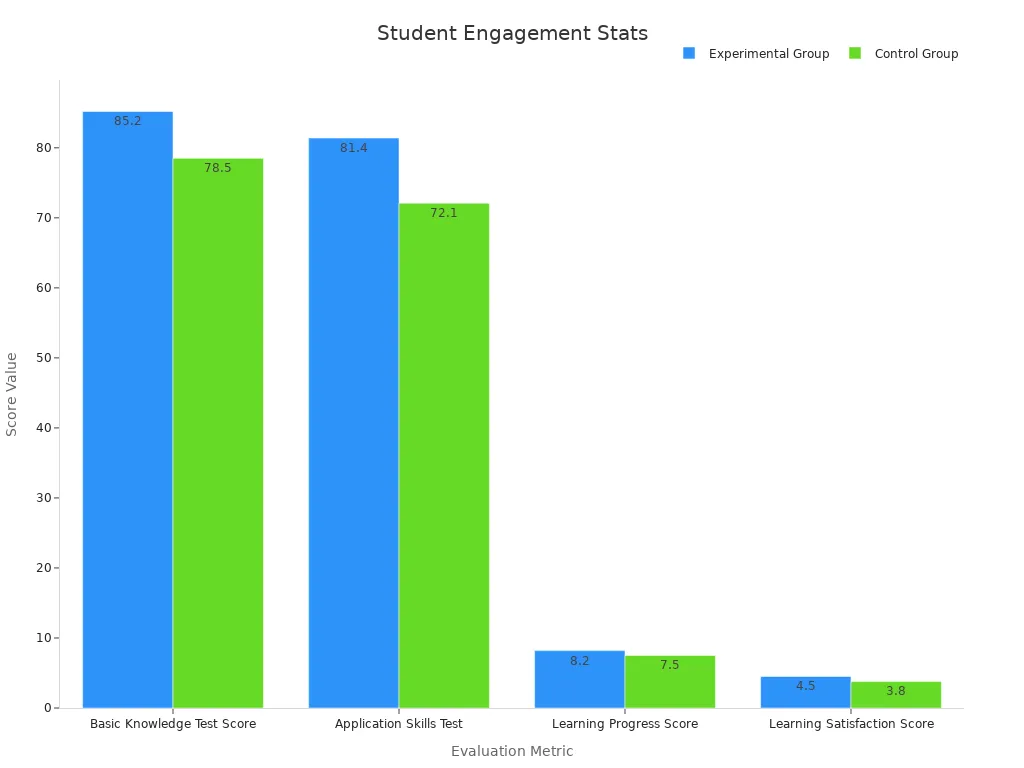
Note: Adaptive learning tools also help teachers find at-risk students early, leading to better engagement, higher test scores, and improved completion rates.
Augmented reality (AR) and virtual reality (VR) tools help students see and interact with lessons in new ways. Many studies show that these technologies boost learning and make lessons more interesting. For example, a systematic review in Spain found that 80% of health science students thought XR (extended reality) was useful, and students learned more compared to traditional methods. In Germany and the UK, medical students using VR showed higher engagement and better skill development. In the United States, VR helped students understand complex topics and improved their performance in emergency training.
Study (Year) | Location | Participants | Technology | Key Findings |
|---|---|---|---|---|
García-Robles et al (2024) | Spain | 2199 students | XR (iVR/AR) | 80% found XR useful, better knowledge gains |
Einloft et al (2024) | Germany | 529 students | XR (VR) | High acceptance, skill benefits |
Walls et al (2024) | UK | 116 students | VR (360°) | More engagement, higher enjoyment |
Bailey et al (2024) | USA | Residents | XR | Improved performance, spatial skills |
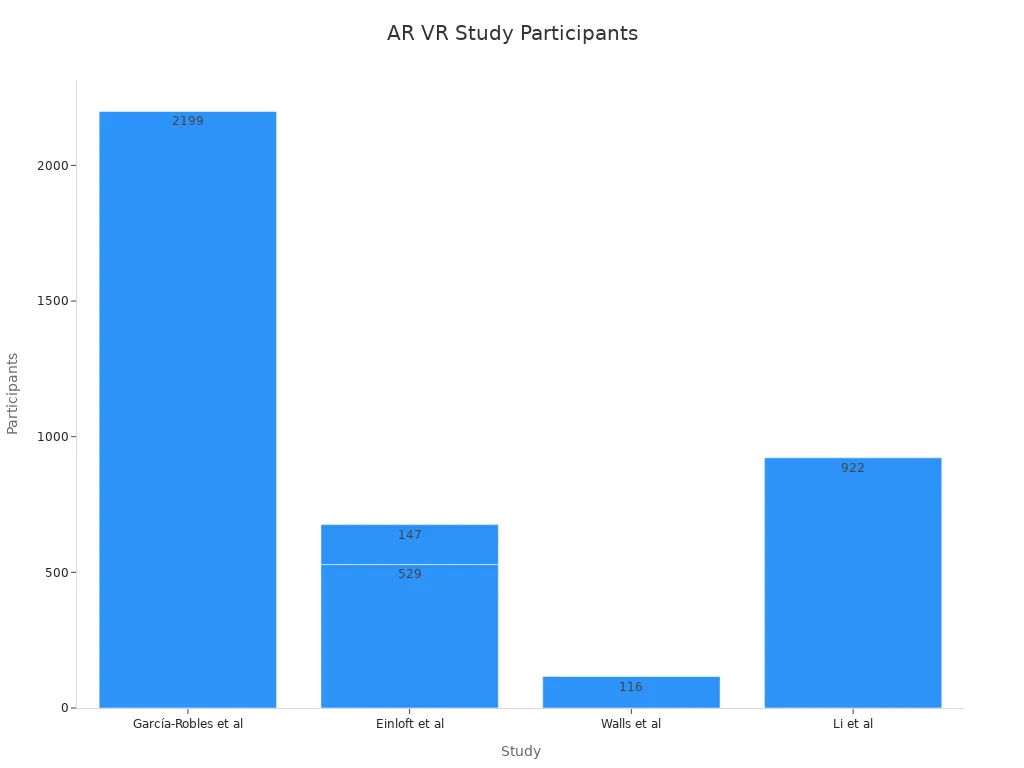
Students using AR apps in statistics classes scored higher and felt more motivated than those using paper methods. VR-based anatomy lessons also helped students remember more and feel less anxious during exams.
Real-time collaboration platforms let students work together, even from different places. These platforms use AI to give instant feedback and help students solve problems as a team. Meta-analyses show that students learn more when they use tools like ChatGPT in group activities. Real-time feedback and social interaction keep students motivated and help them think deeply.
AI tools in collaborative settings improve learning across subjects.
Real-time feedback boosts motivation and higher-order thinking.
Team-based VR simulations build communication and teamwork skills.
Four to eight weeks of collaborative learning helps students develop strong questioning skills.
AI-driven platforms make learning active and social, leading to better outcomes.
Students feel more confident and engaged when AI supports their teamwork.
Teachers play a key role by guiding students and giving personal feedback.
Gamification uses games, quizzes, and competitions to make learning fun and engaging. Research shows that over 60% of students and teachers have a high opinion of gamified lessons. Students report higher motivation and confidence when learning with games. In Spain, students who used gamified lessons scored better and felt more satisfied.
Aspect | Statistic / Finding |
|---|---|
High perception level | Students: 61.7%; Educators: 58.9% |
Engagement & Motivation | Over 63% for both groups |
Confidence (educators) | 60.8% high confidence |
Benefits | Better critical thinking, teamwork, and decision-making |
Gamification also supports flexible pacing and instant feedback, helping students remember what they learn and enjoy the process.
IoT devices and AI-powered systems now give students and teachers instant feedback. These tools analyze student work as soon as it is submitted. Students see their mistakes right away and can fix them before moving on. Teachers spend less time grading and more time helping students who need extra support. AI systems use clear rules to grade work, which makes feedback fair and accurate. Many schools combine AI feedback with teacher comments to make sure students understand what to do next.
Real-time data processing happens in milliseconds. This speed allows students and teachers to see results almost instantly. Technologies like streaming data and event-driven apps make this possible. Schools use these systems to watch student progress and give feedback without delay.
Adaptive learning platforms also use real-time feedback. These platforms check how students do on each task and suggest new lessons that match their needs. Teachers get updates on student performance and can change their teaching plans right away. This approach helps students stay on track and improves learning outcomes.
AI assessment systems provide immediate feedback, preventing misconceptions.
Teacher grading workload drops by about 70% with these tools.
Adaptive systems recommend learning paths based on strengths and weaknesses.
Real-time insights help teachers adjust lessons quickly.
IoT data helps schools predict student needs and improve results. Predictive analytics look at patterns in attendance, grades, and behavior. These tools spot students who might fall behind or drop out. Teachers and counselors can then step in early to help.
Many learning platforms use data to suggest lessons or activities that fit each student. For example, Duolingo changes its lessons based on how well a student does. ClassDojo finds patterns that lead to better grades and social skills. Colleges like Georgia State University use early warning systems to stop students from signing up for the wrong classes.
Personalized learning recommendations come from behavior and skill data.
Early warning systems use IoT data to find at-risk students.
Data-driven instruction helps teachers plan better lessons.
Predictive models improve test scores and graduation rates.
Schools use analytics to plan budgets and improve course offerings.
Case studies from Arizona State University and the University of Michigan show that these tools help more students succeed. Data analytics also make school operations more efficient and help teachers focus on what matters most—student learning.
Schools use IoT devices to collect and manage large amounts of personal information. This data includes student names, addresses, grades, medical records, and even attendance logs. Protecting this information is critical. Cybercriminals often target schools because they store so much sensitive data. Ransomware attacks on K-12 schools increased by 92% in one year. Higher education institutions saw a 70% rise in similar attacks. One in four schools faced a cyberattack in 2022. These attacks can disrupt learning and put students at risk for identity theft or emotional distress.
Many schools still use outdated technology, which makes them more vulnerable. Limited budgets make it hard for schools to invest in strong cybersecurity systems. Experts recommend regular data backups, staff training, and clear plans for responding to incidents. Schools that follow these steps can better protect their students and staff.
Note: Data breaches can have long-term effects on students. Protecting student privacy must remain a top priority for every school.
Schools must follow strict rules to keep student data safe. In the United States, the Family Educational Rights and Privacy Act (FERPA) sets standards for handling student records. In Europe, the General Data Protection Regulation (GDPR) requires schools to protect personal information. These laws create legal obligations for schools and colleges.
The following statistics highlight why compliance is so important:
Ransomware attacks on K-12 schools increased by 92% in one year.
Higher education institutions experienced a 70% year-over-year increase in ransomware attacks.
One in four schools was hit by cyberattacks in 2022.
Schools manage vast amounts of sensitive data, making them prime targets.
Many schools operate on outdated infrastructure, increasing their risk.
Compliance regulations like FERPA and GDPR require secure data handling.
Budget constraints limit cybersecurity investments, raising the need for strong security measures.
Schools that meet compliance standards help protect students and avoid costly penalties. Regular audits, updated security policies, and investment in cybersecurity tools support compliance and keep school communities safe.
Blockchain technology changes how schools issue and verify academic certificates. Many universities now use digital certificates that are stored on a blockchain. These certificates are easy to share and hard to fake. Students can access their diplomas on their phones and show them to employers or other schools at any time.
Several leading institutions have adopted blockchain for digital credentials:
MIT’s Digital Diploma project gives students tamper-proof diplomas that are always accessible.
University of Melbourne has issued blockchain-based credentials since 2017, allowing instant sharing and secure verification.
Southern New Hampshire University uses blockchain for digital badges and certificates, making verification much faster.
University of Nicosia records certificates on the Bitcoin blockchain, which increases transparency and protects against fraud.
Central New Mexico Community College issues diplomas and transcripts on blockchain, supporting instant verification and reducing fraud.
Digital certificates on blockchain reduce the time and errors in checking credentials. AI-driven systems help automate the process, making it more efficient. Schools can connect these systems with job application platforms, so employers can quickly check if a certificate is real.
Blockchain-based credentialing systems make academic records secure and trustworthy. These systems use cryptography to protect data, so no one can change or fake a certificate. Employers and schools can easily check if a student’s achievements are real.
Blockchain supports quality education by making records transparent and easy to verify. It helps reduce fraud and builds trust in academic achievements.
Key benefits of blockchain credentialing include:
Secure, tamper-proof storage and verification of credentials.
Transparent records that employers can check quickly.
Portability, so students can share their achievements anywhere.
Lifelong learning records that track skills over time.
Evidence Aspect | Description |
|---|---|
Blockchain networks process many transactions quickly, showing high efficiency. | |
Cryptographic Verification | Certificates cannot be forged or changed, reducing fraud risk. |
User Feedback | Users report better time efficiency, cost savings, and satisfaction with blockchain credentials. |
Case Studies | Schools like MIT and University of Melbourne show improved trust and faster validation. |
Blockchain credentialing helps students, schools, and employers trust academic records and makes the process safer for everyone.
Schools and universities use digital twins and AIoT (Artificial Intelligence of Things) to manage their buildings and resources more effectively. A digital twin is a virtual copy of a real-world space, such as a classroom or an entire campus. Sensors collect data from the physical environment and send it to the digital twin. AI systems then analyze this data to help staff make better decisions.
Digital twins help facility managers spot problems before they become serious. For example, sensors can detect a water leak or a broken air conditioner early. AI can predict when equipment needs maintenance, which reduces downtime and saves money. Schools also use these tools to improve safety by finding risks quickly.
The table below shows how digital twins and AIoT improve facility management:
Improvement Area | Description | Measurable Outcomes |
|---|---|---|
Risk Mitigation | Early anomaly detection identifies security breaches, safety hazards, and quality issues early. | Prevention of significant damage, enhanced safety. |
Defect Reduction | Digital twins and computer vision simulate changes and inspect products with high accuracy. | Reduced defects, improved product quality. |
Operational Efficiency | AIoT enables continuous monitoring and autonomous decisions in production lines. | Optimized production parameters, increased efficiency. |
Cost Reduction | Automation and predictive maintenance reduce downtime and operational costs. | Financial savings and ROI improvements. |
Financial Impact | Benefits are especially notable for complex operations or high-value assets. | Clear financial returns and operational advantages. |
Digital twins and AIoT help schools save money, keep students safe, and make buildings work better.
Interactive environments use technology to make learning spaces more engaging. Schools add games, mobile apps, and videoconferencing tools to classrooms. These tools help students work together and learn in new ways. Teachers use learning management systems (LMS) to track progress and give feedback quickly.
A study in African higher education shows that interactive technologies create student-centered spaces and improve academic results. However, some schools face challenges like poor internet access and low digital skills. Urban schools often have more resources than rural ones, so not all students benefit equally.
The table below highlights how interactive technologies impact engagement:
Statistic Description | Value/Percentage |
|---|---|
U.S. organizations using eLearning for professional development | 77% |
High school students using digital learning platforms | 63% |
Learners perceiving online learning as better or equal to traditional | 85% |
Retention rate from video-based educational materials | 95% |
Online learners preferring self-paced learning | 94% |
Online learners accessing LMS via laptops | 78% |
Online learners using smartphones to complete courses faster | 45% |
VR elearning market value in 2018 | $60 million |
Expected VR elearning market value by 2027 | $1.4 billion |
Expected adoption of VR products by 2022 | $33.9 billion |
Expected LMS tools enabled by AI by 2024 | 47% |
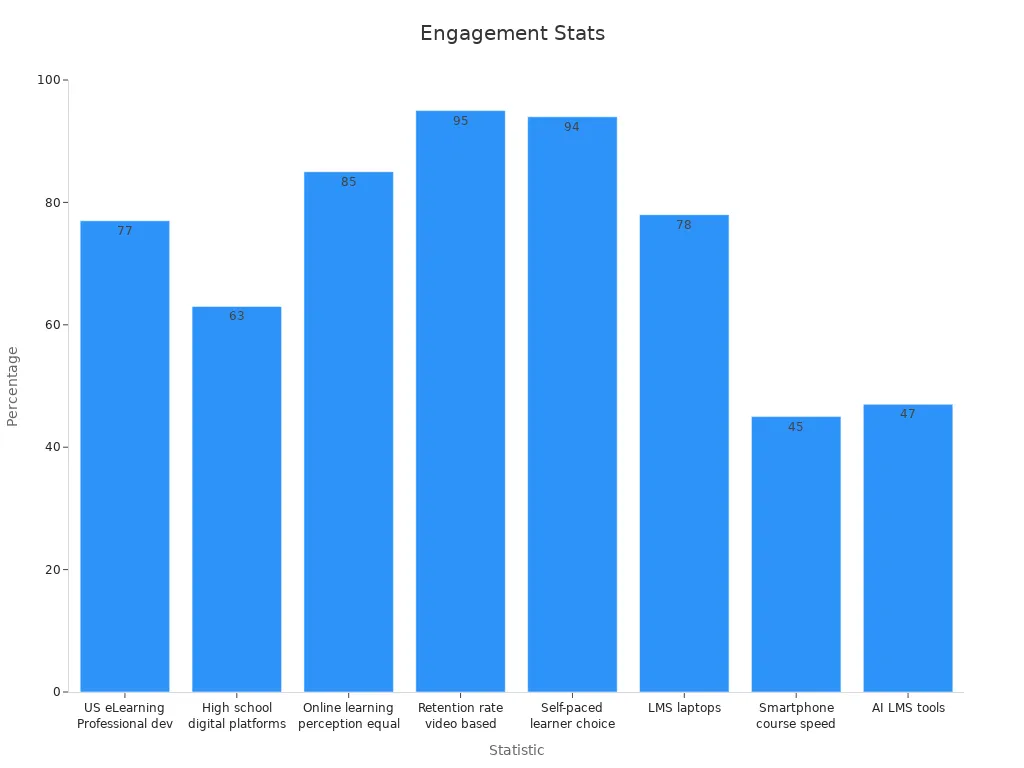
Collaborative platforms help students build teamwork skills.
Real-time assessments give instant feedback.
Regularly updated content and real-world problem solving keep students interested.
Simulations and project-based learning make lessons more meaningful.
Interactive environments powered by AIoT and digital twins help students stay motivated and improve learning outcomes.
Schools and universities now use IoT to make their campuses more energy efficient. Many have switched from battery-powered devices to RF wireless power technology. This change lowers maintenance costs and helps the environment. Battery-free sensors can work all the time without needing new batteries. This reduces electronic waste and keeps devices running smoothly.
RF-powered sensors track when people are in a room. They turn lights and HVAC systems on or off based on occupancy. This saves energy every day. Environmental sensors powered by RF energy check air quality and other conditions without needing battery changes. Smart lighting controls use RF energy, so building managers do not have to worry about maintenance.
Some key results show how much energy schools can save:
Energy Efficiency Metric | Statistic | Description |
|---|---|---|
Reduction in energy consumption (water heater) | Achieved through IoT-driven optimization in building energy management systems. | |
Cost saving in electric vehicle charging | 30.6% average | Enabled by smart algorithms leveraging off-peak electricity rates via an IoT platform. |
Schools that use these systems see lower bills and help protect the planet. Students and staff also enjoy healthier, more comfortable spaces.
IoT also helps schools take better care of their buildings. Regular inspections and preventive maintenance catch problems early. This stops small issues from turning into expensive repairs. Digital tools like CMMS help staff track work and make better decisions.
Clean, safe, and working facilities support learning and reduce health problems.
Preventive maintenance schedules keep equipment in good shape and avoid big replacement costs.
Technology-enabled management saves time, money, and energy.
Facilities Condition Assessments let schools plan for future expenses. AI and Maintenance 4.0 strategies predict equipment failures before they happen. Automated systems adjust HVAC and lighting to save energy. AI-powered surveillance improves safety and lowers risks.
Proactive maintenance helps schools avoid emergencies and stick to their budgets. This keeps learning spaces safe and reliable for everyone.
5G technology will play a major role in the future of IoT in education. Schools and universities will see faster data speeds and much lower delays. This will help real-time learning tools like AR and VR work smoothly. Students will use more devices at the same time without slowing down the network. Edge computing will let data process closer to where it is collected, making responses quicker and more reliable. AI will help manage these networks, making sure every device stays connected and works well. Electronics will support many ways to connect, so classrooms can adapt to new tools easily.
5G brings higher data speeds and lower latency, perfect for real-time AR and VR lessons.
Many devices can connect at once, so every student can use smart tools without problems.
Edge computing makes data processing faster and more reliable.
AI helps manage networks and keeps everything running smoothly.
New electronics support different ways to connect, making classrooms flexible.
These changes will improve how students learn and how teachers teach. The future of IoT in education will depend on strong, fast, and smart networks.
The future of IoT in education will see even more growth as new technologies appear. Schools will use big data and learning analytics to help students succeed. Video-based learning will become more popular, especially with younger students. Spending on 5G and immersive learning tools will rise quickly. AI will help teachers give feedback and track student progress.
Trend / Technology | Statistical Evidence / Projection | Supporting Example / Impact |
|---|---|---|
Big Data & Learning Analytics | University of Baltimore: 40% lower LMS use among students with lower grades; Syracuse University uses analytics for advising | |
Video-based Learning | 67% of millennials and 82% of Gen Z prefer YouTube as a learning platform | Interactive video learning grows with embedded questions and navigation |
5G Technology & Immersive Learning | Lab and fieldwork spending CAGR: 190.1% (higher ed), 168.7% (K-12) forecast 2019-2023 | Verizon awarded $1M to universities for 5G-enabled immersive learning; better VR, AR, MR, and video streaming |
AI in Education | AI used for personalized learning, progress tracking, and dropout reduction | AI-driven assessment systems give instant feedback and personal evaluations |
To prepare for the future of IoT in education, schools should:
Invest in strong network infrastructure and edge computing.
Train teachers and staff to use new technologies.
Set clear rules for data privacy and security.
Use analytics to guide teaching and support students.
Stay open to new tools and flexible learning models.
Schools that plan ahead will help students succeed in a world shaped by the future of IoT in education.
IoT trends continue to reshape education by making learning more interactive and efficient. Schools use IoT tags to track equipment, which reduces loss and improves resource management. Big data and video platforms help students learn in ways that fit their needs. Teachers see better results when students use learning management systems. However, schools face challenges with security and training. To prepare for the future of iot in education, schools should invest in strong networks and support teachers with ongoing training. The next wave of technology will bring even more opportunities for students and educators.
IoT in education means using smart devices and sensors to connect classrooms, track resources, and support learning. These tools help teachers and students work better together and improve school operations.
IoT gives students real-time feedback and helps teachers spot learning gaps quickly. Smart tools adjust lessons to fit each student’s needs. This approach leads to higher engagement and better results.
Schools use strong security systems to protect student data. They follow laws like FERPA and GDPR. Regular updates and staff training help keep information safe from cyber threats.
Schools use smart whiteboards, RFID library systems, and digital badges. They also use sensors for energy savings and safety. These tools make learning spaces smarter and more efficient.
IoT helps teachers use data to guide lessons and give instant feedback. Teachers can focus more on helping students and less on paperwork. This change supports better teaching and learning.